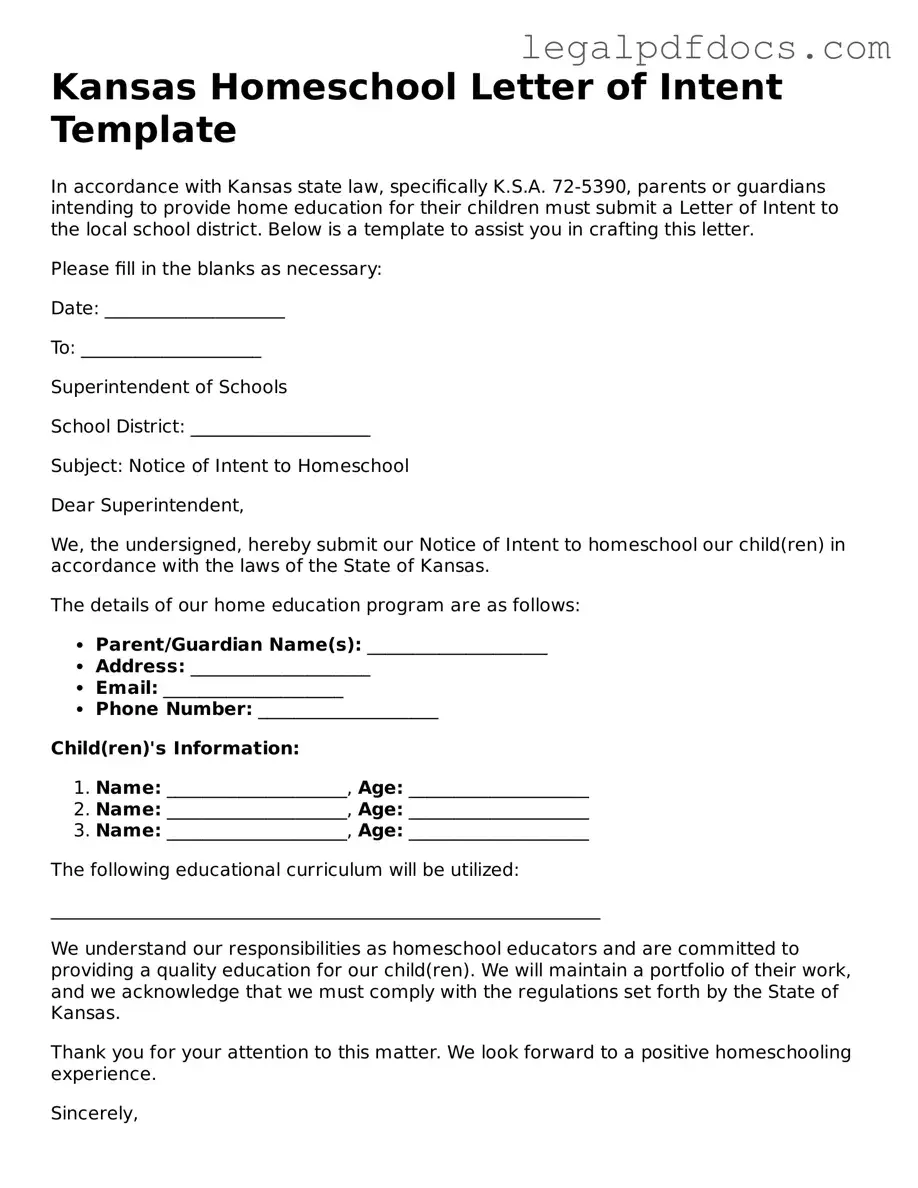Official Homeschool Letter of Intent Form for Kansas
The Kansas Homeschool Letter of Intent form is a crucial document that parents must submit to officially notify the state of their decision to homeschool their children. This form outlines the intent to provide a home-based education and ensures compliance with state regulations. Understanding how to properly fill out this form is essential for a smooth homeschooling experience.
Ready to get started? Fill out the Homeschool Letter of Intent form by clicking the button below.
Open Homeschool Letter of Intent Editor Here
